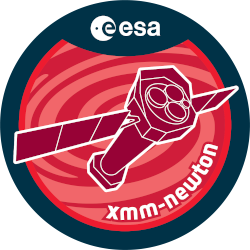

| Proposal ID | 041378 |
| Title | X-Ray Observations of Jupiter in Support of the New Horizons Flyby |
| Download Data Associated to the proposal | https://nxsa.esac.esa.int/nxsa-sl/servlet/data-action-aio?obsno=0413780101 |
| DOI | https://doi.org/10.5270/esa-hcfo9mw |
| Principal Investigator, PI | Dr G. Randall Gladstone |
| Abstract | On February 28th 2007, the New Horizons (NH) spacecraft will flyby Jupiter for agravity assist to Pluto. Closest approach (C/A) is 32 Jupiter radii, but the NHinstruments will conduct intensive studies from C/A-52d to C/A+100d. Importantnew studies of auroral and magnetospheric physics are planned that may be well-supported by Chandra observations. Chandra support of the Cassini flyby ofJupiter in 2000 led to a major revision of our understanding of Jupiters x-rayaurora. We propose 108ks of Chandra time to support three planned NHinvestigations; a time-variability study during approach, a multi-spectralmorphology study near C/A, and a magnetotail dynamics study as NH heads toPluto. In addition, we request 72ks of XMM-Newton time to investigate spectral differences at low energy. |
| Publications |
|
| Instrument | EMOS1, EMOS2, EPN, RGS1, RGS2 |
| Temporal Coverage | 2007-02-24T20:14:22Z/2007-03-09T02:20:09Z |
| Version | 17.56_20190403_1200 |
| Mission Description | The European Space Agencys (ESA) X-ray Multi-Mirror Mission (XMM-Newton) was launched by an Ariane 504 on December 10th 1999. XMM-Newton is ESAs second cornerstone of the Horizon 2000 Science Programme. It carries 3 high throughput X-ray telescopes with an unprecedented effective area, and an optical monitor, the first flown on a X-ray observatory. The large collecting area and ability to make long uninterrupted exposures provide highly sensitive observations. Since Earths atmosphere blocks out all X-rays, only a telescope in space can detect and study celestial X-ray sources. The XMM-Newton mission is helping scientists to solve a number of cosmic mysteries, ranging from the enigmatic black holes to the origins of the Universe itself. Observing time on XMM-Newton is being made available to the scientific community, applying for observational periods on a competitive basis. |
| Creator Contact | https://www.cosmos.esa.int/web/xmm-newton/xmm-newton-helpdesk |
| Date Published | 2008-03-30T00:00:00Z |
| Last Update | 2025-08-04 |
| Keywords | "time variability", "2000 led", "chandra time", "multi spectral morphology", "cassini flyby", "horizons flyby", "chandra support", "28th 2007", "XMM", "closest approach", "magnetotail dynamics", "jupiter radii", "x ray", "flyby jupiter", "gravity assist", "nh heads", "conduct intensive", "nh instruments", "magnetospheric physics", "major revision", "XMM-Newton", "xray aurora", "horizons nh spacecraft", "low energy", "xmm newton time" |
| Publisher And Registrant | European Space Agency |
| Credit Guidelines | European Space Agency, Dr G. Randall Gladstone, 2008, 'X-Ray Observations of Jupiter in Support of the New Horizons Flyby', 17.56_20190403_1200, European Space Agency, https://doi.org/10.5270/esa-hcfo9mw |